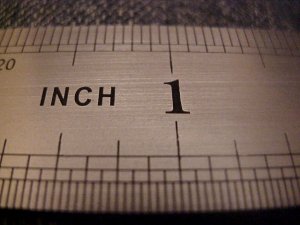steel rule

A steel rule, also known as a straightedge or ruler, is the simplest and most common measuring tool. Steel rules are typically made of a tempered steel or stainless steel, and are typically coated with a protective finish to prevent corrosion and wear. They are available in a range of sizes, from small, pocket-sized rulers to large, full-length rulers that can measure several feet in length.
Steel rules can be flexible or nonflexible, thin or wide. The thinner the rule, the more accurately it measures, because the division marks are closer to the work.
Generally, a steel rule has four sets of marks, two on each side of the rule. On one side are the inch marks. The longest lines are for 1-inch increments. On one edge of that side, each inch is divided into eight equal spaces of 1/8 inch each. On the other edge of that side, each inch is divided into 1/16-inch spaces. To make counting easier, the 1/4 inch and the 1/2-inch marks are normally longer than the smaller division marks. The other side of the steel rule is divided into 32 and 64 spaces to the inch. Each fourth division in the inch is usually numbered for easier reading.
Steel rules are used in a variety of ways, depending on the application. In drafting and design, they are used to draw straight lines and measure distances. In construction, they are used to measure and mark materials, such as wood and metal, for cutting and assembly. In carpentry, they are used to mark straight cuts and measure the length of boards and other materials.
